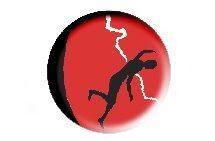
La Reve
Picasso
1932
.
The $40-Million Elbow
Picasso
1932
.
The $40-Million Elbow
.
.
October 23, 2006
.
You might have seen “Le Rêve,” Picasso’s 1932 portrait of his mistress, Marie-Thérèse Walter, in your college art-history textbook. The painting is owned by Steve Wynn, the casino magnate and collector of masterpieces. He acquired it in a private sale in 2001 from an anonymous collector, who had bought it at auction in 1997 for $48.4 million. Recently, Wynn decided that he’d like to sell it, along with several other museum-quality paintings that he owns. A friend of his, the hedge-fund mogul and avid collector Steven Cohen, had coveted “Le Rêve” for years, so he and Wynn and their intermediaries worked out a deal. Cohen agreed to pay a hundred and thirty-nine million dollars for it, the highest known price ever paid for a work of art.
.
A few weeks ago, on a Thursday, a representative of Cohen’s came from California to inspect the painting. She removed it from the wall, took it out of its frame, and confirmed that it was in excellent shape. On Friday, she wrote her condition report, and so, according to their contract, the deal was done. All that was left was the actual exchange of money and art..That weekend, Wynn had some friends visiting from New York—David and Mary Boies, Nora Ephron and Nick Pileggi, Louise Grunwald, and Barbara Walters. They were staying, as they often do, at his hotel and casino, the Wynn Las Vegas. As they had dinner together on Friday night, Wynn told them about the sale. “The girls said, ‘We’ve got to see it tomorrow,’ ” Wynn recalled last week. “So I said, ‘I’ll be working tomorrow. Just come on up to the office.’ ” (He had recently moved “Le Rêve” there from the hotel lobby.)The guests came at five-thirty, and Wynn ushered them in. On the wall to his left and right were several paintings, including a Matisse, a Renoir, and “Le Rêve.” The other three walls were glass, looking out onto an enclosed garden. He began to tell the story of the Picasso’s provenance. As he talked, he had his back to the picture. He was wearing jeans and a golf shirt. Wynn suffers from an eye disease, retinitis pigmentosa, which affects his peripheral vision and therefore, occasionally, his interaction with proximate objects, and, without realizing it, he backed up a step or two as he talked. “So then I made a gesture with my right hand,” Wynn said, “and my right elbow hit the picture. It punctured the picture.” There was a distinct ripping sound. Wynn turned around and saw, on Marie-Thérèse Walter’s left forearm, in the lower-right quadrant of the painting, “a slight puncture, a two-inch tear. We all just stopped. I said, ‘I can’t believe I just did that. Oh, shit. Oh, man.’”
.
Wynn turned around again. He put his pinkie in the hole and observed that a flap of canvas had been pushed back. He told his guests, “Well, I’m glad I did it and not you.” He said that he’d have to call Cohen and William Acquavella, his dealer in New York, to tell them that the deal was off. Then he resumed talking about his paintings, almost, but not quite, as though he hadn’t just delivered what one of the guests would later call, in an impromptu stab at actuarial math, a “forty-million-dollar elbow.”
.
A few hours later, they all met for dinner, and Wynn was in a cheerful mood. “My feeling was, It’s a picture, it’s my picture, we’ll fix it. Nobody got sick or died. It’s a picture. It took Picasso five hours to paint it.” Mary Boies ordered a six-litre bottle of Bordeaux, and when it was empty she had everyone sign the label, to commemorate the calamitous afternoon. Wynn signed it “Mary, it’s all about scale—Steve.” Everyone had agreed to take what one participant called a “vow of silence.” (The vow lasted a week, until someone leaked the rudiments of the story to the Post.)
.
The next day, Wynn finally reached his dealer, and told him, “Bill, I think I’m going to ruin your day.” The first word out of Acquavella’s mouth was “Nooo!” Later that week, Wynn’s wife, Elaine, took the painting to New York in Wynn’s jet, where she and “Le Rêve” were met by an armored truck. Cohen met them at Acquavella’s gallery, on East Seventy-ninth Street, and he agreed that the deal was off until the full extent of the damage could be ascertained. The contract, at any rate, was void.
.The painting wound up in the hands of an art restorer, who has told Wynn that when he’s done with it, in six or eight weeks, you won’t be able to tell that Wynn’s elbow passed through Marie-Thérèse Walter’s left forearm.
.
Last Friday, when Wynn’s alarm went off, at 7 A.M., his wife turned to him in bed and said, “I consider this whole thing to be a sign of fate. Please don’t sell the picture.” Later that morning, Wynn called Cohen and told him that he wanted to keep the painting, after all.
Last Friday, when Wynn’s alarm went off, at 7 A.M., his wife turned to him in bed and said, “I consider this whole thing to be a sign of fate. Please don’t sell the picture.” Later that morning, Wynn called Cohen and told him that he wanted to keep the painting, after all.
.





No comments:
Post a Comment